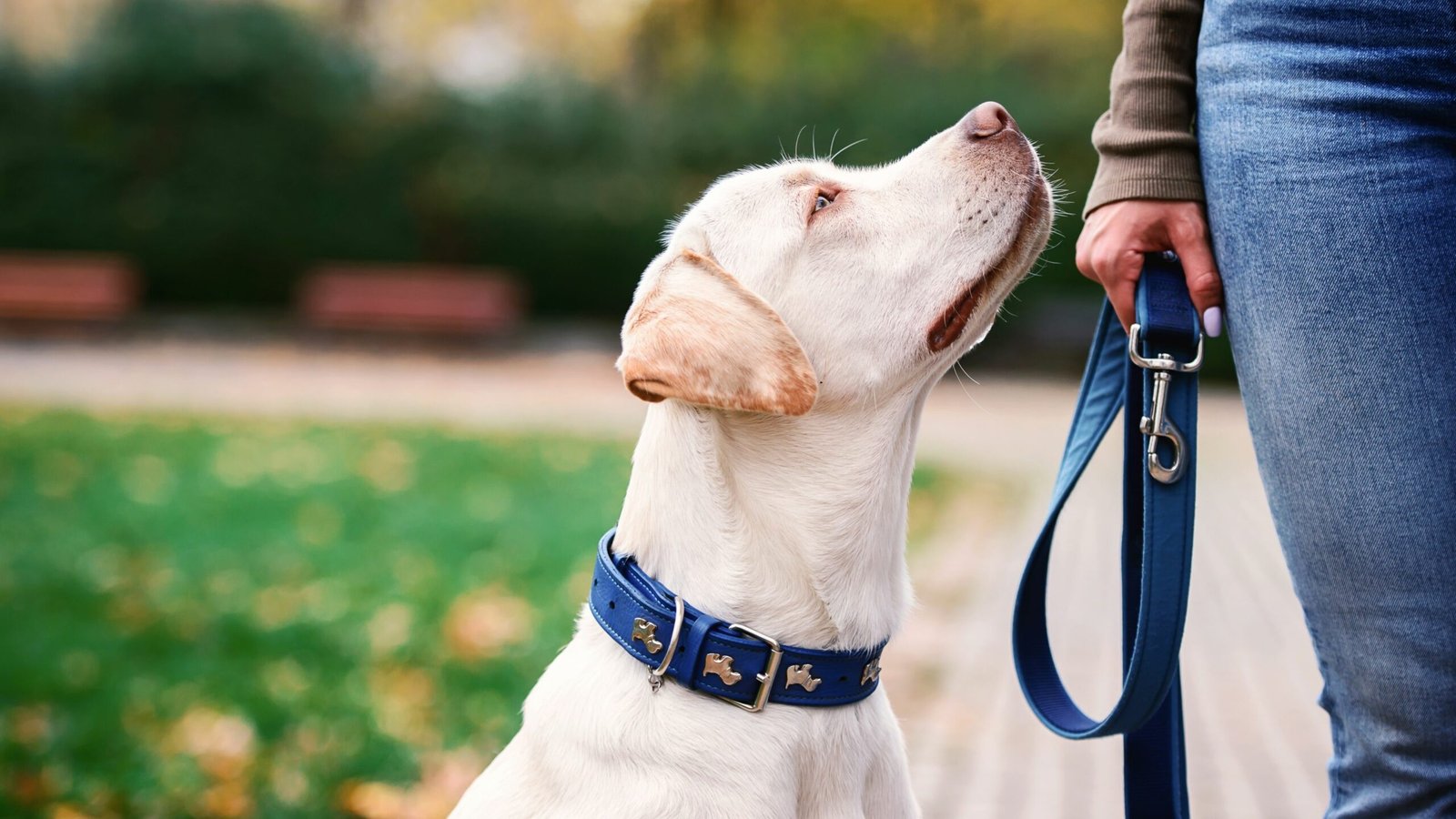When training your beloved canine companion, selecting the right dog training collar is an essential decision. With so many options available in the market, choosing the most suitable one for your pet can be overwhelming. This post will provide you with valuable insights and guidance on selecting the right dog training collar that best meets your furry friend’s needs.

Understanding Different Types of Dog Training Collars
1. Choke Collars
Choke collars, also known as slip collars, are made of metal chains or nylon materials. These collars tighten when pulled and loosen when pressure is released. They are commonly used during obedience training or for dogs with behavioural issues. However, choke collars should be used with caution as they can potentially harm your pet if misused. Instead, using a bark collar can also be considered to train dogs.
2. Martingale Collars
Martingale collars are similar to choke collars but have a more controlled mechanism due to their design. They consist of a chain looped through fabric or nylon material. When pulled, the martingale collar tightens evenly around the neck but avoids excessive constriction that could cause harm.
3. Prong/Pinch Collar
Prong or pinch collars are designed with metal links that have prongs facing inward toward your dog’s neck. When tension is applied, these prongs pinch the neck slightly, promoting obedience training by creating discomfort when unwanted behaviours occur. It is essential to use prong collars correctly and under professional guidance to avoid harm. For a wide selection of training collars, check out the options at Pet-Tech.
4. Electronic Training Collar
Electronic training collars operate using a handheld remote that emits static stimulation (also known as e-stim) or vibration to provide feedback during training sessions. They offer various levels of intensity and can effectively reinforce commands from a distance.
Factors to Consider Before Choosing
1. Training Goals and Methods
Consider your specific goals for training your pet—whether it’s obedience training or addressing behaviour issues such as excessive barking or leash pulling. Different collars are suitable for different training approaches, so knowing your objectives will help determine which collar is most appropriate and avoid health problems in dogs.
2. Size and Breed of Your Dog
The size and breed of your dog play a significant role in choosing the right training collar. Smaller dogs usually require lightweight collars with gentler corrections, while larger breeds may need sturdier collars capable of handling more force.
3. Comfort and Fit
A proper fit is crucial for your pet’s comfort and safety. Ensure that the collar fits snugly but does not constrict the neck excessively. Take measurements before purchasing and consult sizing guides provided by manufacturers to find the perfect fit.
4. Training Collar Functions
Consider which functions you’ll need from the training collar. Some collars come with additional features such as vibration, tone alerts, or LED lights. These functions may assist in specific training situations or make it easier to locate your dog at night.
5. Professional Advice
Seek guidance from professional trainers or veterinarians experienced in dog behaviour if you’re uncertain about which training collar is best suited for your pet’s needs. They can offer personalised recommendations based on your dog’s temperament, behavioural issues, and training goals.
6. Durability and Quality
Investing in a high-quality, durable training collar is essential for long-term use. Dogs, especially active ones or those that tend to chew on things, may put the collar through wear and tear. Choosing a sturdy collar made of durable materials can ensure its longevity.
7. Budget
Consider your budget when selecting a dog training collar. There are options available at various price points. While cost shouldn’t be the sole determining factor, it’s important to find a collar that fits within your budget without compromising the quality and effectiveness you need.
8. Safety Features
Ensure that the training collar you choose includes safety features such as quick-release buckles or reflective strips for visibility during nighttime walks. These features add an extra layer of protection for your pet while using the training collar.
Conclusion
Choosing the suitable dog training collar involves carefully considering various factors such as the type of collar, training goals, size of your pet, comfort, and expert guidance if needed. Remember to prioritise gentle methods that prioritise positive reinforcement during training sessions alongside fitting each time correctly. By selecting the appropriate dog-training tool for your furry friend’s requirements, you can effectively learn and grow together throughout this beautiful journey during his life.

